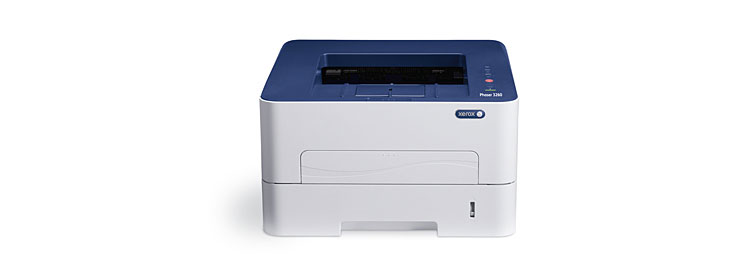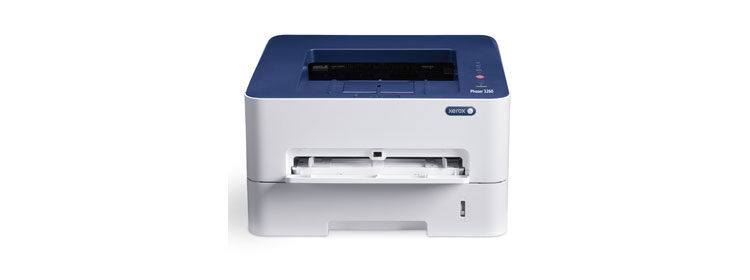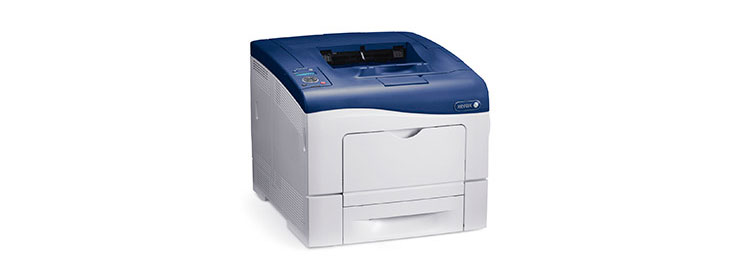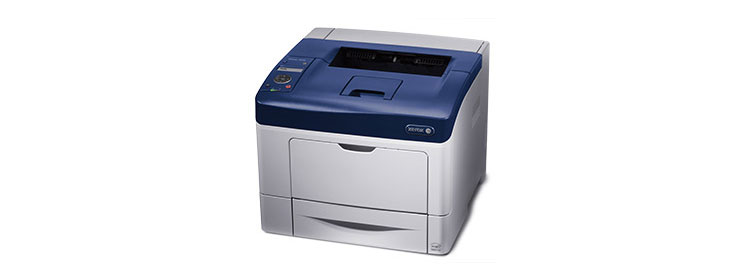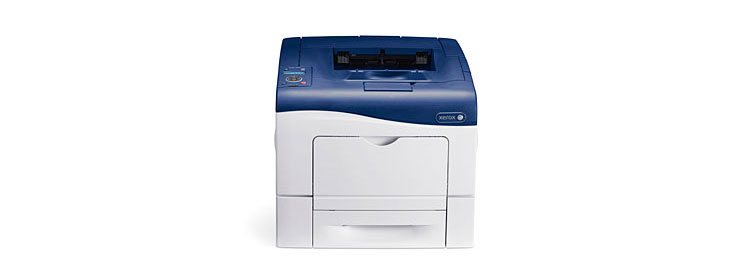The Xerox Phaser 3260/DNI ($209) is a little different from most monochrome laser printers in its price range. It’s meant as a personal printer or for shared use in a micro office, but instead of focusing on paper handling and running cost, like most of its competition, its strength is its output quality. If high quality is your key concern, and particularly if you have relatively light-duty print needs, that can make it your preferred choice.
In essence, the 3260/DNI$159.00 at Amazon is a variation on the Xerox Phaser 3260/DI$159.00 at WalMart at a little higher price and with Ethernet added as an alternative to Wi-Fi for connecting to a network. The Ethernet connector makes the printer a little more appropriate than its near-twin for sharing in an office. It also makes it more directly competitive with the OKI B412dn$199.98 at Amazon, and the Brother HL-5450DN$147.99 at Amazon, which is our current Editors’ Choice medium- to heavy-duty monochrome laser for personal use or for shared printing in a micro office.
Aside from the lack of an Ethernet connector in the Xerox 3260/DI, the two key differentiators among these four models are paper handling and running cost. All four include a 250-sheet paper tray and duplexer (for two-sided printing) as standard. Beyond that, the two Xerox printers offer only a single-sheet manual feed with no upgrade options. Both the OKI and Brother models include multipurpose trays as standard, for paper capacities of 300 sheets or more, and both offer additional options, boosting their maximum total capacities to 800 pages or more.
The OKI and Brother printers also have the advantage on running cost, claiming roughly 2 cents per page in each case. Both Xerox printers have a claimed cost of 3.4 cents per page, a difference that works out to well over $100 for 10,000 pages. Depending on how much you print, you could easily save enough with the OKI B412dn or Brother HL-5450DN to cover the initial price of the printer. And the more you print, the more costly either Xerox model will be over its lifetime compared with printing the same set of pages with the OKI or Brother printers.
Basics, Setup, and Speed
Like the Xerox 3260/DI, the 3260/DNI offers mobile printing, but it’s limited to support for Apple AirPrint and for printing through the cloud. If you connect the printer to a network by either Wi-Fi or Ethernet, you can print to it through a Wi-Fi access point on the network using AirPrint from iOS phones and tablets, as well as Apple computers that support AirPrint. If you connect to a single PC via USB cable instead of connecting to a network, you won’t be able to print through the cloud. However, you can still print using AirPrint, by taking advantage of the 3260/DNI’s Wi-Fi Direct to connect directly to the printer.
Setup is standard. The printer weighs only 16 pounds 13 ounces, making it easy for one person to move into place, and it’s small enough to fit on your desk easily at 8.4 by 14.5 by 13.2 inches (HWD). For my tests, I connected it to a network by Ethernet and installed the driver on a Windows Vista system.
Xerox rates the 3260/DNI at 29 pages per minute (ppm) in simplex mode, but the driver installs to print in duplex (two-sided) mode by default. On our business applications suite, I clocked the printer (using QualityLogic’s hardware and software for timing) at a respectable, but not impressive, 7.2ppm in duplex mode and 8.9ppm in simplex mode, essentially tied with the Xerox 3260/DI in both cases. For simplex mode, it’s a touch slower than the OKI B412dn (9.6ppm), and slower still when compared with the Brother HL-5450DN(10.8ppm).
Output Quality
Output quality is one of the 3260/DNI’s strongest points, with text quality in the middle of a fairly tight range that includes most models, top-tier graphics, and photo quality that’s close to top tier.
For text, that translates to being good enough for nearly any business use, although not quite suitable for high-quality desktop publishing applications. Graphics output is easily good enough for any business need where monochrome output is appropriate, including, for example, PowerPoint handouts and the like. Similarly, photo output is equal to or better than most monochrome lasers can manage. That makes it good enough for, say, anyone who still prints newsletters, instead of sending them as PDF files.
Unless you can take good advantage of the Xerox Phaser 3260/DNI’s high-quality output, you’ll probably be better off with the OKI B412dn or the Brother HL-5450DN, with their higher paper capacities and lower costs per page. Similarly, if output quality is a key consideration, but you don’t need to connect by Ethernet, you can save a little on initial cost by getting the Xerox 3260/DI. If output quality matters, however, and you need to—or simply prefer to—connect to a network by Ethernet instead of Wi-Fi, the 3260/DNI is the obvious choice.
original article

